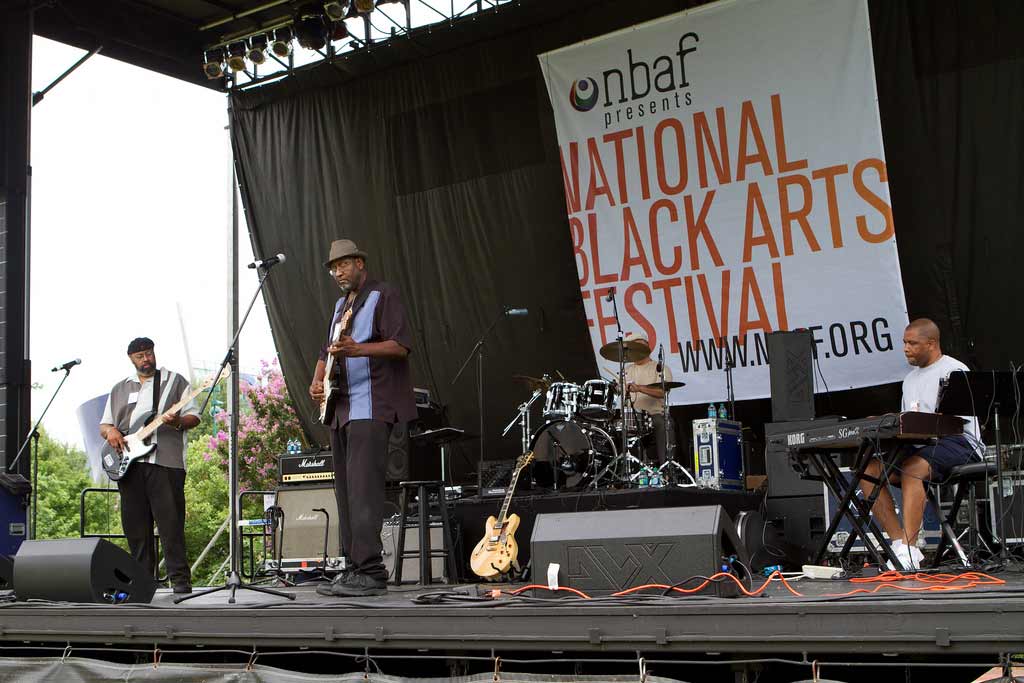Atlanta has been called “the crown jewel in the story of black America” for good reason.
The city’s distinction as a crossroads for equal opportunity dates back generations, due in no small part to the concentration of historically black colleges (the largest in the country) and long legacy of African American entrepreneurship and innovation. This unique heritage is also a major draw for tourism. Almost a million people annually visit the burial site of Martin Luther King Jr. and his wife, Coretta.
Each January, the King Center for Nonviolent Social Change and nearby Ebenezer Baptist Church host a full week of programming leading up to the federal MLK holiday and remain busy during February’s observance of Black History Month. The National Black Arts Festival, founded in 1987, has expanded beyond its traditional July programming to produce educational and cultural events year-round. No matter what the calendar says, it’s always Black History Month in Atlanta.

Frankie’s Blues Mission on stage at NBAF. Photo © John Ramspott, licensed Creative Commons usage.
The latest addition to the growing tourist district surrounding Centennial Olympic Park, the National Center for Civil and Human Rights serves as an worthy complement to the Martin Luther King Jr. National Historic Site. Interactive exhibitions help to place King’s life and the struggles of the 1960s in a global context.
Although the West End campuses of Atlanta’s historically black universities (including Spelman, Morehouse, and Morris Brown colleges) aren’t necessarily a must-see attraction, they do include a few gems for art lovers and African American history buffs. Clark Atlanta University Art Galleries (223 James P Brawley Dr., Tues.-Fri. 11am-5pm, free) features ambitious murals by Hale Woodruff and more than 600 works from the school’s historical collection of sculpture and paintings. Close by, the Spelman College Museum of Fine Art features works by and about women of the African diaspora.
The first general museum in North America to have a full-time curator dedicated to folk art, the High Museum of Art pays special tribute to Georgia native Nellie Mae Rowe. At Night Things Come to Me, on permanent display in the Nellie Mae Rowe Room, gives a peek at the colorful “haints” and “varmints” from African American folklore that often surface in the self-taught artist’s drawings and mixed-media sculpture. The outstanding folk art collection includes noteworthy works by Thornton Dial, Ulysses Davis, Sam Doyle, and others.
![Sunner Time by artist Nellie Mae Rowe. Photo © Nellie Mae Rowe [Public domain], via Wikimedia Commons.](https://www.holidaytravel.cc/Article/UploadFiles/201602/2016021615565370.jpg)
Sunner Time by artist Nellie Mae Rowe. Photo © Nellie Mae Rowe [Public domain], via Wikimedia Commons.
Designated as a National Historic Landmark in 1976, the Sweet Auburn Historic District stretches from Courtland Street to the Downtown Connector. The six-square-block area was once an essential enclave for the city’s African American movers and shakers. Atlanta’s first black-owned office building rose here, as did the city’s first black-owned newspaper. The Royal Peacock Club hosted acts like Ray Charles, James Brown, and Aretha Franklin.
The APEX Museum includes historical information about Atlanta’s African American pioneers and the neighborhood’s role in civil rights history.
Excerpted from the Third Edition of Moon Atlanta.